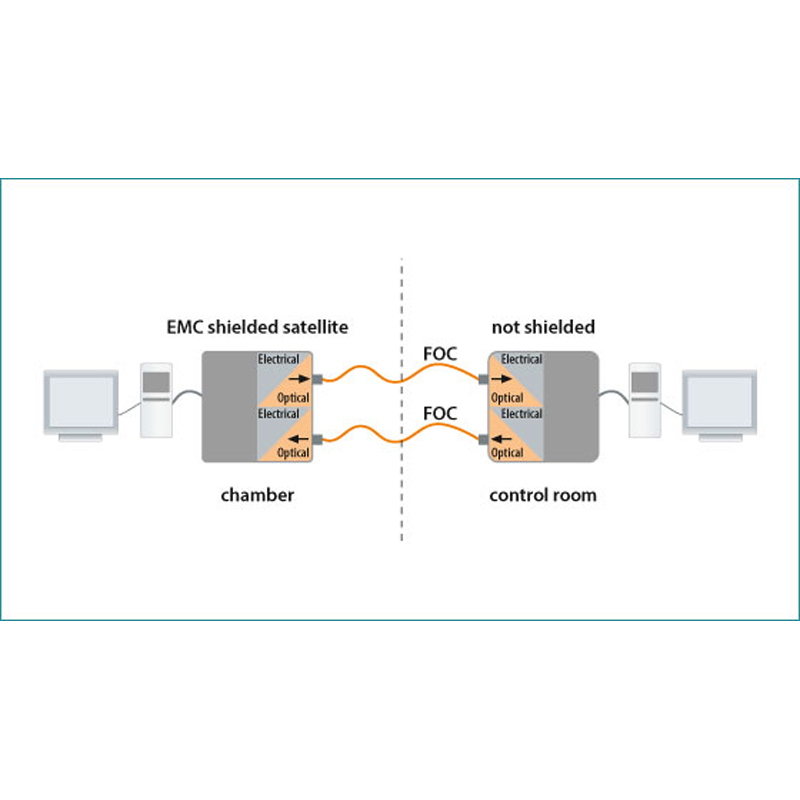
Fibre Optic Converters
Part No.: MPPT-FibreOptic-foCAN(v4.0)
MPPT-FibreOptic-foEthernet
MPPT-FibreOptic-foBroadR(Automotive)
MPPT-FibreOptic-foHDMI
MPPT-FibreOptic-foLIN
MPPT-FibreOptic-foRS232
MPPT-FibreOptic-foUSB
MPPT-FibreOptic-foE-Charger
we offer a variety of different interfaces that convert electrical signals into optical signals and back.
產品介紹
Fibre Optic Converters
In complex testing environments it is often needed that electrical signals have to be transmitted into the chamber or out of the chamber to the test equipment.
For that purpose we offer a variety of different interfaces that convert electrical signals into optical signals and back. Such the signal can be transmitted via fibre optics and is immune against electrical fields.
A sophisticated shielding and filtering concept ensures that the interfaces are highly immune against radiation and do not deliver out any significant emission.
In most cases both units are shielded.
Features
- RF-Immunity: Antenna radiated 200 V/m, 200 MHz –18 GHz, ISO11452-2, CW, AM, PM / Stripline 200 V/m, 10 k – 1 GHz, ISO11452-5, CW, AM, PM
- Emission: EMC compliant to CISPR25 Class 5, 150 k – 4 GHz
- Battery (approx. 8 hours operation) or mains powered
- Compact metal housing
- No galvanic connection between test equipment and measurement instrument
- Max. distance: depends on technology and use case
Accessories
-
Standard
- One set consists of two converter units
- All interfaces are shipped with the appropriate power supply or battery and charger.
-
Optional
- Fibre optic cables: variable lengths ST/FSMA-connector or ST/ST-connector
- FO-Patches (Feed Through wall Patches)
Technical Specifications
| NAME | VALUE | ||
|---|---|---|---|
|
foCAN (v 4.0) |
|
 |
|
| foEthernet |
|
 |
|
|
foBRoardR (Automotive) |
|
 |
|
|
foHDMI (up to 1.2) |
|
 |
|
| foLIN |
|
 |
|
| foRS232 |
|
 |
|
| foUSB |
|
 |
|
| foE-Charger |
Fibre Optic Converter for Car Charging Stations
The growing market of e-mobility demands certification of the
The fibre optic converters for the high frequency data lines are
The powerlines need to be fed via appropriate filters, whereas
As Powerline, Control Pilot signal (PWM) and CAN bus are
The versatile concept of the PONTIS EMC converter may be
Both sides (car and EVSE) are shielded and may be used inside
As some standards are still in draft status, the exact standard(s) |
 |
|